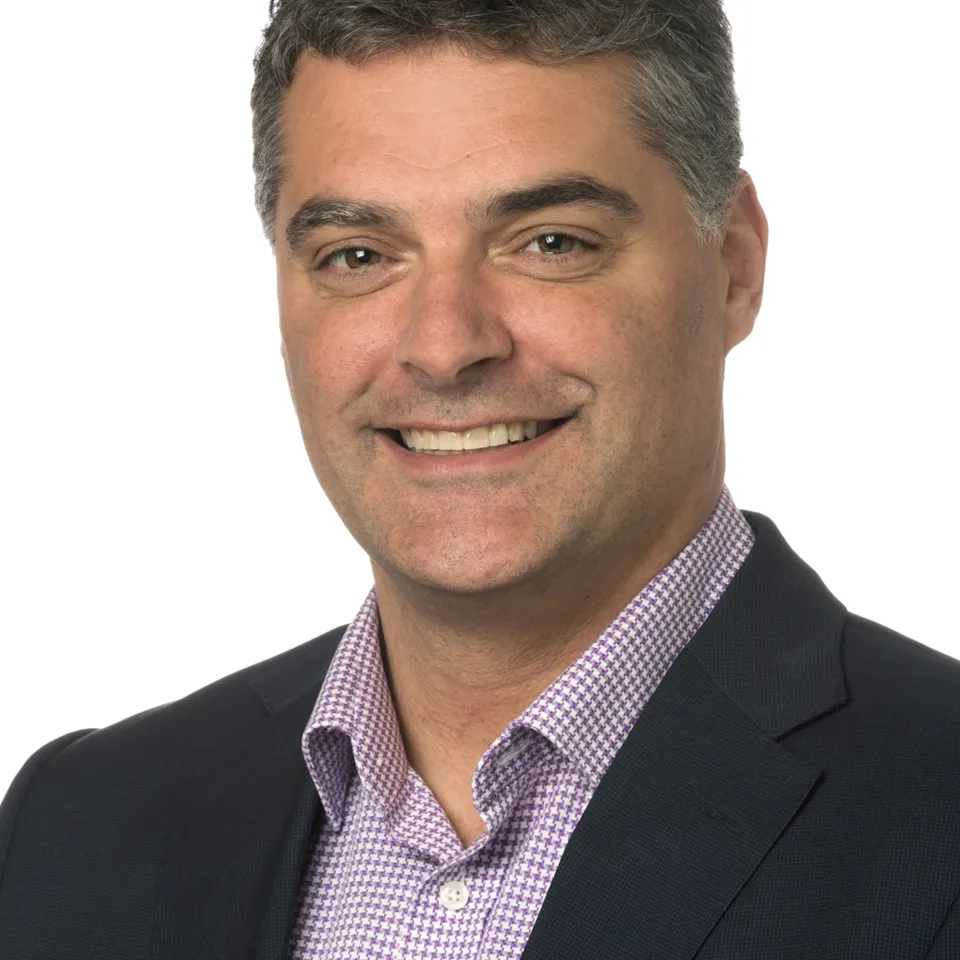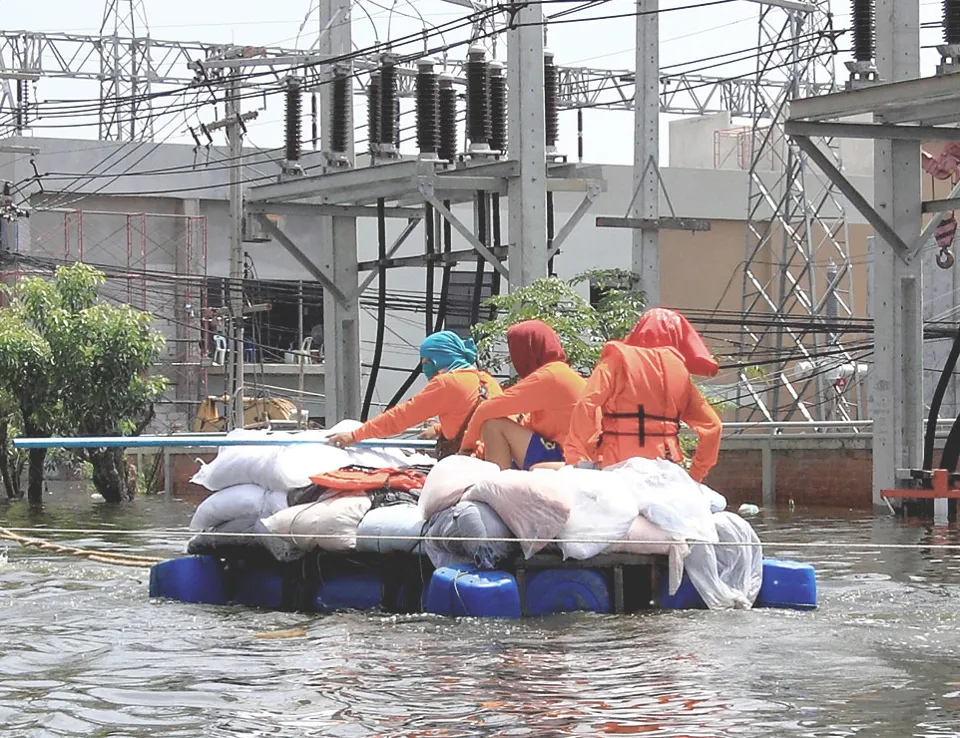
Flying high with future sustainable technology in aerospace
11 Mar 2024
The aerospace and aviation industries have set ambitious goals for reducing CO2 emissions to net-zero by 2050. But what technologies are emerging and how are businesses exploring their options?
Jean Thomassin, Executive Director, New products and Services at Pratt & Whitney Canada, and Oliver Porter, Head of Aerospace at Ricardo, explain the challenges and opportunities.
During a 25-year career with Pratt & Whitney Canada, Jean Thomassin has seen many changes. He knew early on, that despite a strong inclination towards machinery and mechanical systems, electronics and control systems would play a greater part in the industry's future. He joined the business to be involved in that journey.
“My PhD is in mechanical engineering, as I’ve always been interested in the dynamics of a vehicle, how vibrations effect performance for example. Alongside this, I had a theoretical background in electrical engineering and controls, looking at complex numbers, that’s how I came to be responsible for special projects at Pratt & Whitney Canada.
“I’ve seen a lot of transformation in the aerospace industry over the past two decades, one being the move away from rare earth materials in electrical motors. This transformation started in the automotive industry, but it’s increasingly being looked at for aviation and aerospace. One of our key performance indicators is weight and power density. New technologies are opening up opportunities to push the boundaries.”
Oliver Porter, Head of Aerospace at Ricardo agreed that new, more sustainable, technologies are shaping the future of aviation.
“Given the breadth of applications and requirements in aviation there’s no single solution to decarbonise the entire industry,” he said.
“Sustainable aviation fuels will be a vital part of this journey. But further efficiency improvements and disruptive technologies will be required to ensure a sustainable future, as demand for air travel continues to grow over the coming decades.”
Battery and electrical energy storage
There’s also been some interesting breakthroughs in battery and electrical energy storage, however, due to the high-power and energy densities required in aerospace applications, there’s still more to do before it can offer a complete propulsion system that works for all aircraft.
“In aviation we oversize engines and power plants for safety reasons” said Jean, “it’s not like you can just pull over in a plane.
“Currently in our flight demonstrator project, batteries are being used for power bursts, or to help downsize and optimise performance in the engine and other systems, to increase efficiency, as opposed to providing a power source for complete propulsion. We’re trying to optimise every component, so that we minimise the energy needed per seat mile.”
Oliver agreed that energy storage remains one of the largest challenges to the electrification of aircraft propulsion.
“Limiting any weight gain compared with conventional fossil fuels is critical to the viability of an aircraft,” he confirmed.
“Hybrid-electric propulsion systems help to reduce this challenge, enabling a smaller, lighter battery to be used to supplement power only when demand is highest. The thermal engine can then be optimised for a more limited operating range, so efficiency of the engine can be improved.”
Hybrid-electric
A key project for Pratt & Whitney Canada is the development of advanced hybrid-electric propulsion technologies for next generation aircraft.
A team of specialist engineers at Ricardo are supporting on the multi-year project, bringing capabilities in decarbonising the transport and energy sector, to improve efficiency and reduce carbon dioxide emissions.
The project is targeting an up to 30% improvement in fuel, or energy, efficiency and a commensurate reduction in carbon dioxide emissions, compared to today’s most advanced turboprop engines for regional aircraft.
“I’m in the world of smaller planes,” said Jean, “below around 100 seats. They have the same challenges as larger aircraft, just on a smaller scale, particularly around system integration.
“If you look at the architecture of a plane, the wing, the propeller and the engine and the electrical energy storage required for propulsion, the best solution will minimise the amount of energy per seat mile. That’s the key.
“An aircraft is designed to work most efficiently when it’s full. So, if you fly your turboprop plane today for 500km at full capacity, that equates to between two and three litres of fuel per 100km per passenger.
“As an industry what interests us is how we evolve the architecture for the next generation of aircraft. We want to minimise the energy usage, so the power plant has to be agnostic to the energy source. This transition is likely to take a few decades to fully implement.
“There needs to continue to be investment in technology and that’s what we’re doing with the hybrid-electric flight demonstrator programme – it’s not just about the aircraft itself, but the entire architecture, a platform that we can build upon and scale, up or down.”
“Automotive is ahead of aerospace when it comes to reducing emissions so when we were looking for a partner who had the engineering capacity and knowledge, we knocked on Ricardo’s door and realised we had a very similar vision – their experience of combustion, fuel cell technology, hydrogen applications and electrification are really beneficial in helping us find the best architecture for future platforms.
”
Jean Thomassin
Executive Director, New Products and Services, Pratt & Whitney Canada

Hydrogen - a balance between weight and power
In addition to the potential to use hydrogen in aviation as a zero C02 emissions fuel, hydrogen also offers a potential technology path for energy storage on aircrafts, due to its high gravimetric energy density, meaning that the weight of the hydrogen as a fuel is low compared to the energy it contains (although in volumetric terms it is four times less energy dense than jet fuel)
“Hydrogen-powered fuel cell systems used to generate electrical power for propulsion are being developed across several transportation sectors,” said Oliver.
“Ricardo’s focus is on the integration of multiple fuel cell stacks and the necessary balance of plant required to achieve high power output with low system mass and volume, whilst additionally achieving up to 15% reduction in hydrogen consumption compared with a conventional approach,” he added.
“It’s that fine balance between weight and power,” explained Jean, referring to Pratt & Whitney Canada’s hybrid-electric flight demonstrator project.
“On an aircraft that weighs 35,000lb, with a maximum capacity of 35 passengers, you need around 2,000 horsepower just to take off. To maintain flight, 1,000 horsepower is required. Our power plant includes battery components, some electrical components and engine components, all of which need to be seamlessly integrated for safety and efficiency. We’re using a platform that demonstrates the technology bricks to develop the aircraft architecture of the future on a 50/50 electrical to mechanical power split.
“There will be a different power split in the future. Future power plant architecture should include lithium-ion batteries, with a high voltage distribution system, there will also be innovation in the heat engine, the wing, the propeller and the airplane architecture.”
Marrying advanced engineering and technological innovation in the aerospace industry with the exact requirements of legislation, including stringent safety criteria, can often be a challenge, one which has the potential to delay decarbonisation in the industry.
“It can sometimes seem like it’s a bit of a fantasy,” said Jean, “but at the end of the day, we need to do what society wants – and that’s not to reduce activity, but to make that activity more efficient.
“Society wants to minimise energy consumption, due to the impact of emissions on our environment, but it also wants to continue travelling.”
Building on the experience of other sectors
One of the reasons Ricardo was chosen to support Pratt & Whitney Canada’s advanced hybrid-electric propulsion technology programme, was due to its experience and engineering expertise in the automotive sector, where synergies were seen.
“Automotive is ahead of aerospace when it comes to reducing emissions,” added Jean, “when we were looking for a project partner, who had the engineering capacity and knowledge, we knocked on Ricardo’s door and realised we shared a similar vision. Ricardo operates at the very highest level, including in niche areas that require high specification and customisation. They are supporting us with several components and systems – their experience of combustion, fuel cell technology, hydrogen applications and electrification are all really beneficial in helping us find the best architecture for future platforms.
“It’s also been great working so closely with the team at Ricardo’s centre of aerospace in Montreal, I believe they have a bright future there.”
“As a global team, we are used to working seamlessly across multiple sites and time zones,” added Oliver.
“Our presence in Montreal has enabled us to drive deeper collaboration with Pratt & Whitney Canada. Furthermore, Montreal is an established aviation industry hub and Ricardo are now a part of that ecosystem, working together with others in industry, government and academia to forge the path towards decarbonisation.”
The aerospace industry needs to find solutions that not only improve efficiency, but also meet sustainability and stringent safety requirements, but this doesn’t necessarily mean one solution will work for all applications. Cost is also likely to play a deciding factor.
According to Jean, the future of aerospace propulsion has the potential to combine hydrogen, a sustainable aviation fuel type, and other energy.
“The future of aerospace propulsion will echo the whole transport ecosystem, we’re part of it after all,” said Jean, “Technologically, the winner will be the solution that uses the least energy, but it also has to function and meet operational requirements.”
Alongside engineering development costs, Jean considers research and development costs and implementation costs as critical for businesses, he says governments have a responsibility to support businesses with a direction of travel and also with the confidence to invest in certain technologies.
“There’s an element of walking the talk,” he said, “finding the winning solution is going to be a challenge, it comes with a huge amount of risk for businesses, due to the costs and scale involved. Currently, every technology is on the table, so it’s a very busy table.
“I’m a systems person and I believe the future is in system integration and finding a sweet spot that will combine different elements and energy sources.
“The NASA TRL Technology measures a system’s maturity of technology components from Level 1 to 9. The measurement allows project personnel to understand how much development a particular technology needs before being utilised. It also helps measure the progress of a project. The further up the scale, the more cost involved. If we want to accelerate decarbonisation in aerospace, we need to put money into taking things from Level 4 to 6, from a concept to prototype and beyond.”
Oliver takes an upbeat view of the future. “There are many challenges ahead for the aviation industry, as we seek to decarbonise air travel, whether technological, legislative or market driven, but it’s solving these challenges that motivates our teams to create together and deliver innovation that moves us towards our collective goals,” he concluded.
Solutions
Solutions for this RQ.





 Follow Ricardo Aerospace, Maritime and Defence for regular updates
Follow Ricardo Aerospace, Maritime and Defence for regular updates






